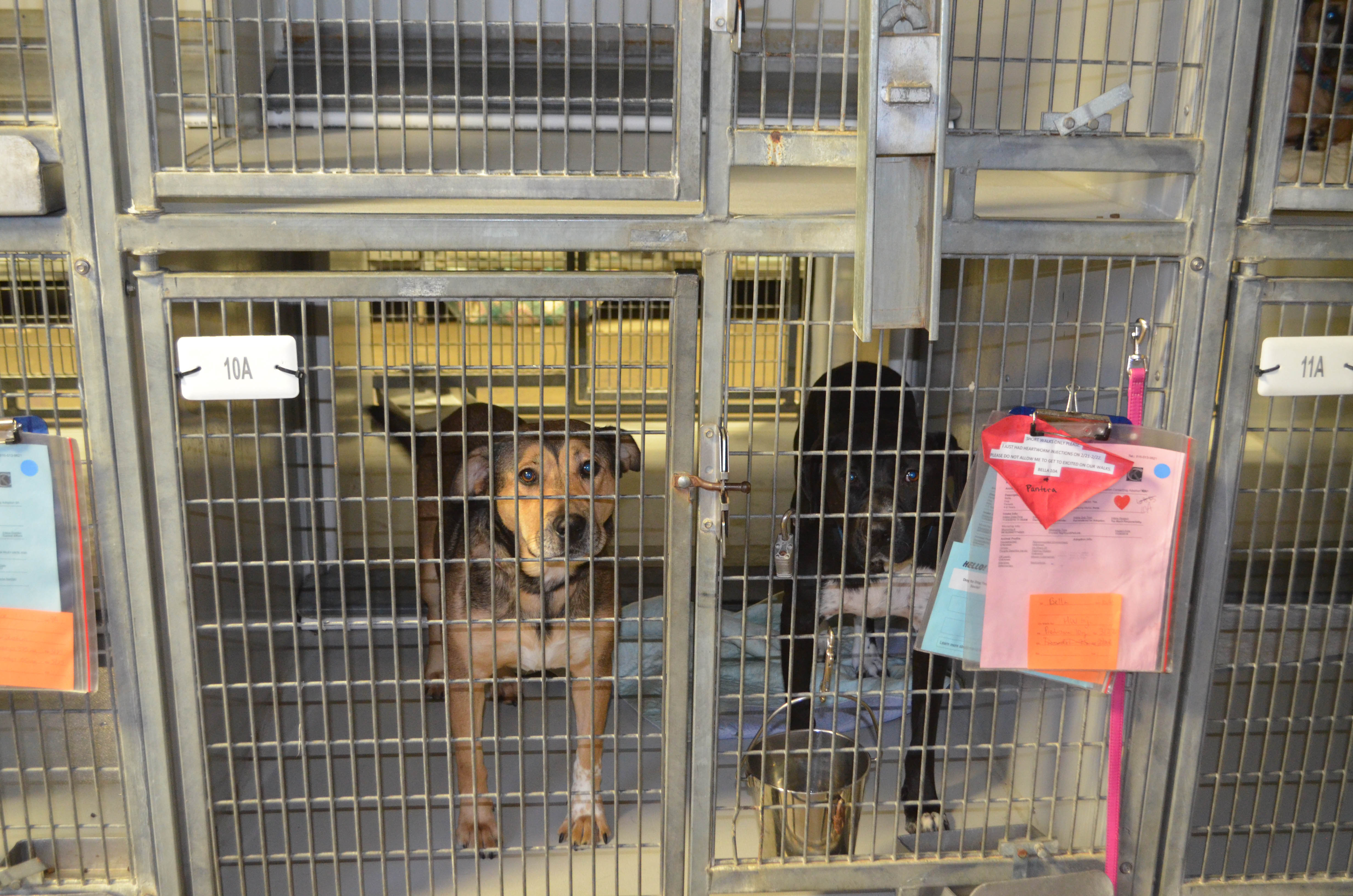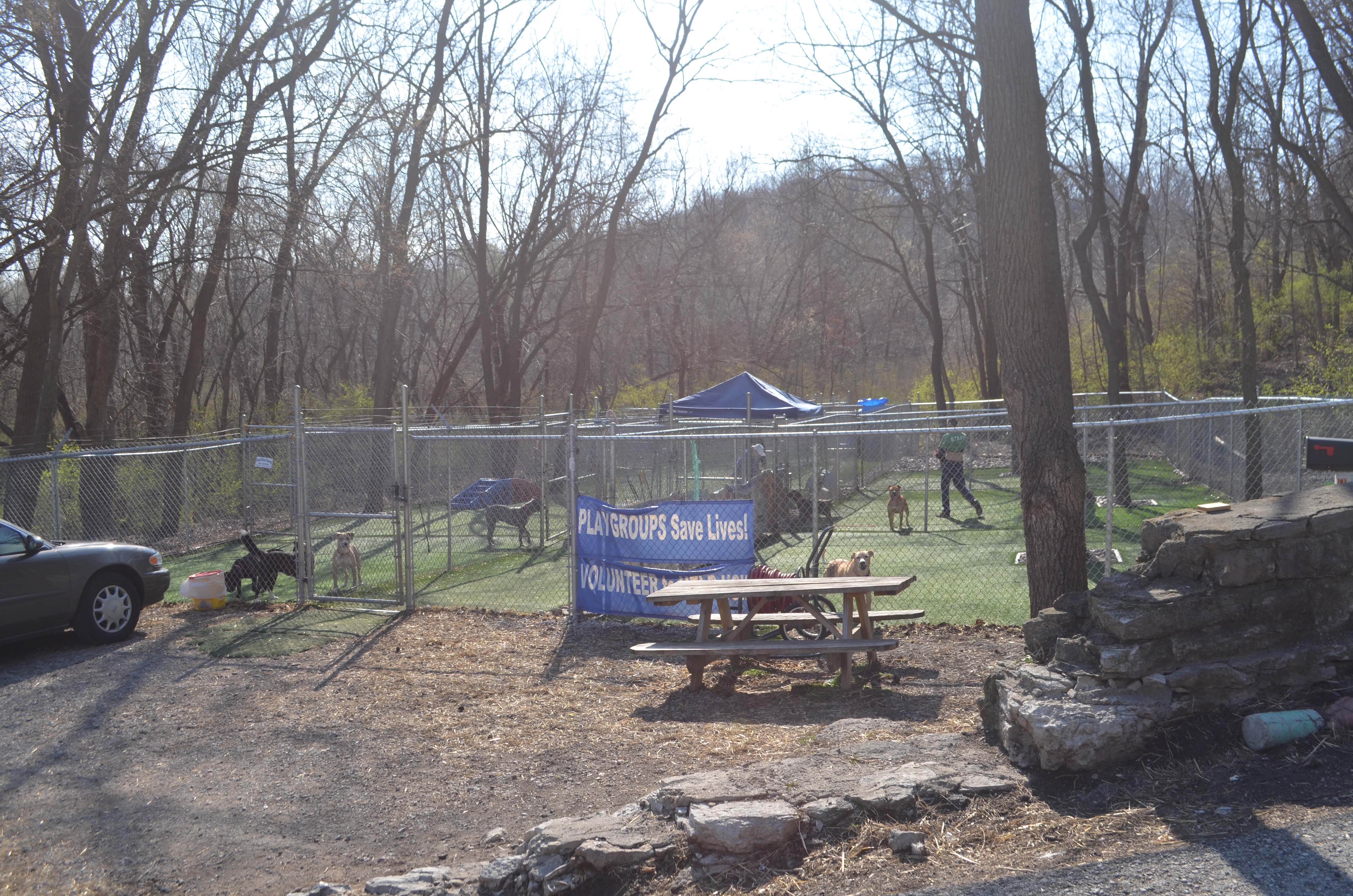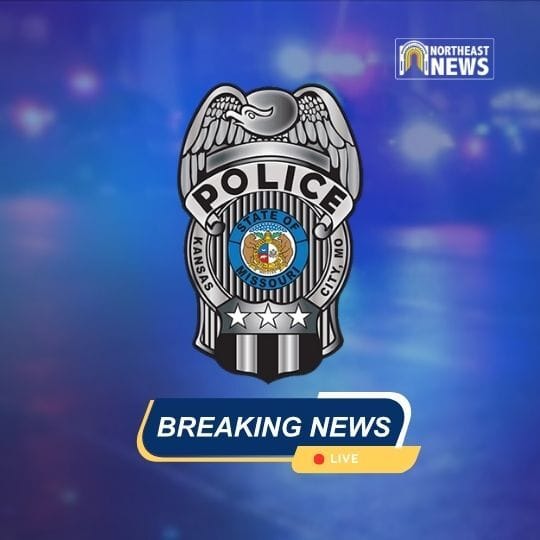
By Paul Thompson
Northeast News
March 22, 2017
KANSAS CITY, Missouri – On top of a former landfill, within a flood plain, and inside of a converted construction storage building, you’ll find the third-largest open admission, no-kill animal shelter in the country.
Only facilities out of Austin, Texas and Reno, Nevada save more animals annually than the Kansas City, Missouri animal shelter (4400 Raytown Rd.), which accomplishes the feat even as it operates out of an outdated 45 year-old, 14,000 sq. ft. facility that lies in the shadow of Arrowhead Stadium. Kansas City Mayor Sly James, City Manager Troy Schulte, and City Councilwomen Teresa Loar and Jolie Justus all agree that the facility needs to be replaced, as do most who have seen it in person. The multi-million dollar question, though, is this: do 57.1% of Kansas City, Missouri voters agree?
The $800 million General Obligation bond issue will come before voters over three distinct ballot questions on April 4. 2017. Question 3 of the G.O. Bond issue is of particular import to proponents of a new animal shelter. If it’s approved, $14 million in public funds would be dedicated for a new 60,000 sq. ft. facility in Swope Park. The plan was announced at Starlight Theatre in September 2016 with great fanfare, including an endorsement from Mayor James, who touted the public/private partnership with KC Pet Project.
“That partnership has doubled the city’s investment in our pets and will now increase our ability to fundraise while increasing our commitment to a no-kill refuge,” said James at the time. “We want residents to know that we heard you, and that we’re responding to what we heard. We absolutely understand the love and dedication that Kansas City and Kansas Citians have for their pets, and we want to create a first-class space where pets can grow and thrive.”
A capital fundraising campaign aiming to bring the public/private investment up to roughly $20 million – cheekily named the Raise the Woof campaign – begins on April 5. By then, the scope of the job at hand will have more clarity. But according to KC Pet Project Director of Marketing and Development Tori Fugate, the move is a necessity even without voter approval of Question 3.
“It’s considered very, very small for the amount of pets that are coming in. We take in 10,000 pets a year,” said Fugate. “The shelter itself is very old and very cramped. It’s just a big room that’s full of dogs.”
There are more concerns. The shelter’s vet clinic resides in a mobile trailer, and it actually represents a significant upgrade over the meager 400 sq. ft. clinic it replaced. The shelter itself isn’t ADA compliant. At less than 1/4 the size of the planned Swope Park facility, every workspace in the shelter is cramped; administrative offices nestle uncomfortably next to kennels. In November, the drains underneath the kennels had deteriorated to the point where they no longer functioned. All of the waste that should have been carried away from the shelter simply gathered underneath the animals, creating an unbearable stench. The drains required emergency replacement.
“It’s events like that that will eventually start stacking up,” said Fugate.
Another issue is how close the animals are to each other. Upon entering the main shelter, the first thing one is liable to notice is the cacophony of strained, anxious barking that dominates the senses. Even with the knowledge that it’s a no-kill shelter, taking a stroll through the shelter’s current facility is a reminder that the process isn’t particularly pretty, in spite of KC Pet Project’s best efforts.
“It’s hard for a lot of people to come here. It very much elicits an emotional response to see so many animals in one room together,” said Fugate. “We do a lot every day to help curb that anxiety that they have. We do an in-kennel enrichment and we do play groups with our dogs every day, trying to help them cope with their surroundings and help them stay mentally strong when they’re with us. All of those would remain in place after we move to the new building.”
In 2008 – four years before KC Pet Project even took over the facility – the Missouri Department of Agriculture wrote a letter to the City stating that it needed to build a new animal shelter. The standards at the time were far below the vision that’s been implemented by KC Pet Project.
“We took over operation of this shelter in 2012. About 70% of the animals that were coming into this shelter were euthanized before KC Pet Project took over,” said Fugate. “We’ve been running it as a no-kill shelter ever since. The shelter is above a 90% save for almost the entire time that we’ve been here. Last year we ended the year at a 94% success rate.”
Considering the intake at the facility, the results are staggering. Fugate notes that the shelter brings in an average of 30 animals per day. It’s not just cats and dogs, either: chickens, rabbits, snakes, iguanas, and even pet rats have been accepted by the shelter. From March 1 until March 15 (hardly part of the shelter’s busy season), 199 animals were dropped off at the facility.
These services are vital for the Historic Northeast. Anecdotally, many who live in the area realize that stray pets are a persistent fixture of the community. KC Pet Project, however, possesses hard data to solidify that impression. The organization pulled seven zip codes that make up the Northeast (64106, 64120, 64123, 64124, 64125, 64126, 64127) to see how its services are utilized in the area.
“It’s hard for us to track how many strays are coming from these areas, just because Animal Control doesn’t actually keep the zip code record whenever they bring animals in. But we do whenever people bring pets in as strays or as owner-surrendered pets,” said Fugate. “Based on that information, we were able to find out that 17% of all our stray pets that are reclaimed by their owners are going home to these zip codes – which is an astoundingly high number.”
Fugate also found that 11% of residents utilizing KC Pet Project services hail from the seven aforementioned zip codes, along with 12% of those who surrender their pets, 9% of those who brought in strays, and 6% of those who adopted pets. In total, the KCMO animal shelter services 58 zip codes throughout Kansas City.
“We service all of Kansas City, Missouri – north, south, east, west. It’s a population of 500,000 people,” Fugate said. “If you’re a taxpayer in Kansas City, Missouri, this is a city service for you.”


















